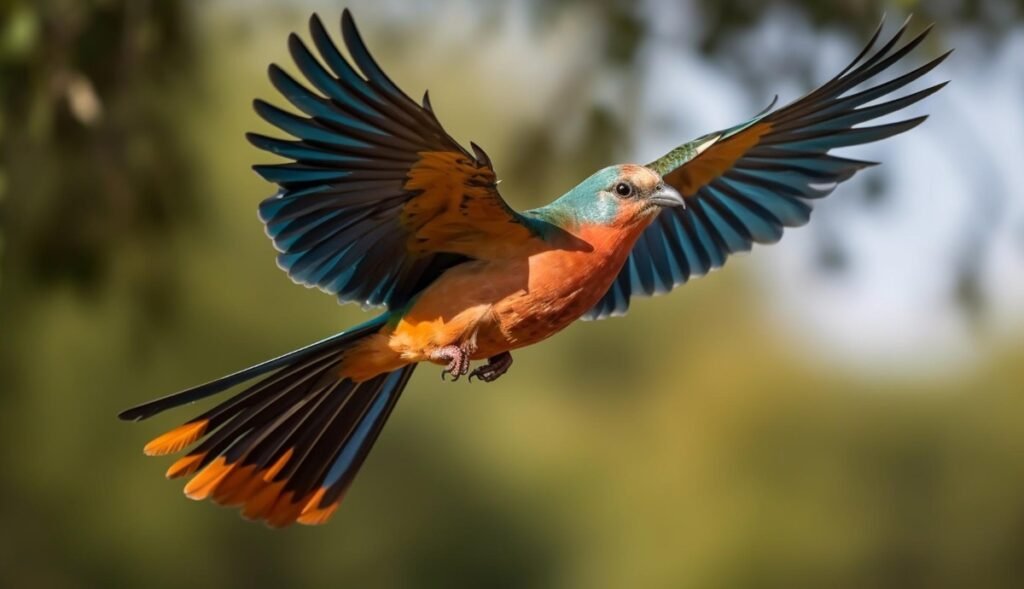Have you ever watched a bird flit from branch to branch, its feathers rustling with every movement? Or seen a flock of birds take to the skies, their wings beating rapidly as they soar and dive in a mesmerizing display of aerial acrobatics? Birds are often described as “twitchy” due to their seemingly constant motion, and yet, there’s more to this behavior than just a quirk of nature. Understanding why birds are so twitchy can reveal fascinating insights into their evolution, behavior, and very survival.
Why Are Birds So Twitchy?
In this article, we’ll delve into the world of birds and explore the reasons behind their twitchy behavior. From the importance of constant movement to the role of predators and prey, we’ll examine the various factors that contribute to a bird’s twitchy nature. Whether you’re a seasoned birdwatcher or simply a nature enthusiast, you’ll gain a new appreciation for the intricate lives of these fascinating creatures.
The Importance of Constant Movement
Birds are constantly on the move, whether it’s foraging for food, escaping predators, or migrating to new habitats. This constant movement is crucial for their survival, as it allows them to stay ahead of predators, find sustenance, and adapt to changing environments. In this sense, a bird’s twitchy behavior is a vital component of its overall survival strategy.
Predators and Prey
Birds have evolved to be constantly on the lookout for predators, and their twitchy behavior is a direct result of this. Whether it’s a hawk swooping down or a snake slithering through the underbrush, birds must be prepared to react quickly to threats. This constant vigilance is reflected in their twitchy movements, as they dart and weave through their environments to avoid danger.
Communication and Social Behavior
Birds also use their twitchy behavior to communicate with each other. From the complex songs and calls of songbirds to the elaborate courtship displays of peacocks, birds use movement to convey important information to other birds. This social behavior is a key component of their twitchy nature, as they work together to build nests, raise young, and defend territories.
Conclusion
In conclusion, a bird’s twitchy behavior is a vital component of its overall survival strategy. From the importance of constant movement to the role of predators and prey, and finally, to the importance of communication and social behavior, we’ve explored the various factors that contribute to a bird’s twitchy nature. Whether you’re a seasoned birdwatcher or simply a nature enthusiast, understanding why birds are so twitchy can reveal a new appreciation for the intricate lives of these fascinating creatures.
Why Are Birds So Twitchy?
Birds are known for their quick movements and sudden changes in direction, which can be quite fascinating to observe. But have you ever wondered why birds are so twitchy? In this article, we’ll explore the reasons behind this behavior and what it tells us about the natural world.
The Evolutionary Advantage of Twitchiness
Birds have evolved to be twitchy as a result of their environment and the predators that inhabit it. In the wild, birds need to be able to move quickly and suddenly to avoid predators, such as hawks, owls, and snakes. This twitchiness allows them to make quick escapes and avoid danger. (See Also: How Do Birds Know How To Build Nests)
- For example, the peregrine falcon is known for its incredible speed, reaching up to 242 mph during its characteristic hunting dive, known as a stoop. This speed allows it to catch its prey off guard and make a quick getaway.
- Other birds, such as the hummingbird, use their twitchiness to evade predators by making quick, darting movements.
The Role of Vision in Twitchiness
Birds have exceptional vision, which plays a crucial role in their twitchiness. Their eyes are positioned on the sides of their head, allowing them to have a wide field of vision and detect movement easily. This helps them to spot predators and react quickly to potential threats.
Birds also have a highly developed sense of binocular vision, which allows them to judge distances and depths accurately. This helps them to navigate their environment and make quick decisions about where to go and what to do.
The Importance of Twitchiness in Courtship and Mating
Twitchiness is not just important for avoiding predators; it also plays a crucial role in courtship and mating behaviors. In many bird species, males will use their twitchiness to attract females and defend their territory.
- For example, the peacock’s impressive courtship display involves spreading its colorful tail feathers and performing a series of rapid, twitchy movements to attract a female.
- Male birds of paradise are known for their elaborate courtship displays, which involve rapid, twitchy movements of their brightly colored feathers.
The Role of Twitchiness in Social Behavior
Twitchiness is also important in social behaviors, such as flocking and foraging. When birds are foraging for food, they need to be able to move quickly and suddenly to catch prey or avoid predators.
In flocks, twitchiness helps birds to stay together and respond quickly to potential threats. When a bird detects a predator, it will often alert the rest of the flock by making a loud call or performing a rapid, twitchy movement. This helps the flock to respond quickly and avoid danger.
The Science Behind Twitchiness
Twitchiness is a complex behavior that is influenced by a range of factors, including a bird’s brain structure, nervous system, and muscles. Research has shown that birds have a unique brain structure that is specialized for processing visual information and making quick decisions. (See Also: What Flowers Do Humming Birds Like)
Birds also have a highly developed nervous system that allows them to respond quickly to stimuli. Their muscles are designed for rapid, precise movements, which allows them to make quick changes in direction and speed.
The Importance of Twitchiness in Conservation
Twitchiness is an important behavior for many bird species, and conservation efforts often focus on preserving habitats and reducing threats to bird populations. By understanding the importance of twitchiness, conservationists can develop more effective strategies for protecting bird populations.
For example, conservation efforts may focus on preserving habitats that are important for bird migration and breeding. This can help to reduce threats to bird populations and preserve the twitchiness that is essential for their survival.
Conclusion
In conclusion, twitchiness is a complex behavior that plays a crucial role in many aspects of a bird’s life. From avoiding predators to attracting mates, twitchiness is an essential component of a bird’s behavior. By understanding the science behind twitchiness, we can gain a greater appreciation for the natural world and the incredible abilities of birds.
Recap
In this article, we’ve explored the reasons behind birds’ twitchiness, including the evolutionary advantages, the role of vision, the importance of twitchiness in courtship and mating, the role of twitchiness in social behavior, the science behind twitchiness, and the importance of twitchiness in conservation. By understanding the importance of twitchiness, we can gain a greater appreciation for the natural world and the incredible abilities of birds.
Why Are Birds So Twitchy: Frequently Asked Questions
Q: Are birds naturally twitchy or is it just a behavior they’ve developed?
Birds are naturally twitchy due to their evolutionary history. In the wild, twitching and flicking their wings and tails helped them to communicate, express emotions, and even defend themselves against predators. This behavior has been passed down through generations, making it an innate part of their nature.
Q: What triggers birds’ twitchy behavior?
Birds’ twitchy behavior can be triggered by a variety of factors, including changes in their environment, the presence of predators or prey, and even the weather. For example, a sudden change in wind direction or the appearance of a predator can cause a bird to become twitchy and alert. Additionally, some birds may exhibit twitchy behavior when they’re feeling stressed, anxious, or excited. (See Also: How To Stop Birds From Pooping On Your Car)
Q: Are all birds twitchy, or is it just certain species?
While all birds exhibit some level of twitchiness, some species are more prone to it than others. Birds that are known for their twitchy behavior include hummingbirds, songbirds, and some species of parrots. However, even birds that are not typically considered twitchy, such as owls and hawks, can exhibit this behavior in certain situations.
Q: Can birds’ twitchy behavior be a sign of illness or stress?
Yes, birds’ twitchy behavior can be a sign of illness or stress. If a bird is exhibiting excessive twitchiness, it may be a sign that it’s experiencing physical or emotional distress. For example, a bird that’s experiencing pain or discomfort may twitch its wings or tail in an attempt to alleviate the sensation. Similarly, a bird that’s under stress or feeling anxious may exhibit twitchy behavior as a way of coping with its emotions.
Q: How can I encourage my pet bird to calm down and reduce its twitchy behavior?
If you’re concerned about your pet bird’s twitchy behavior, there are several steps you can take to encourage it to calm down. First, make sure your bird’s environment is safe and stress-free. Remove any potential sources of stress or anxiety, such as loud noises or predators. You can also try providing your bird with plenty of exercise and mental stimulation, such as toys and puzzle feeders. Additionally, consider offering your bird a calming supplement or herbal remedy, such as chamomile or valerian root, under the guidance of a veterinarian.


